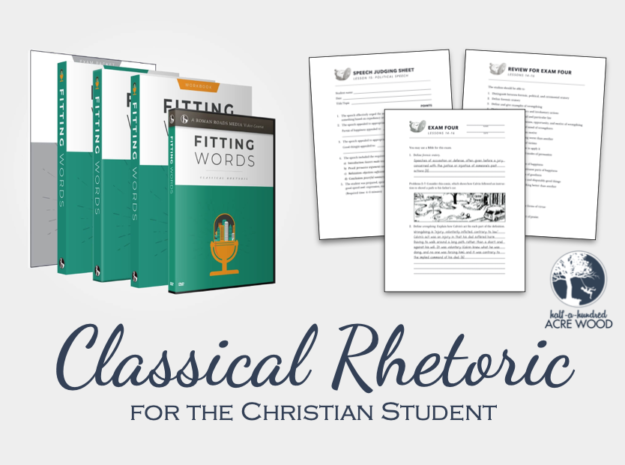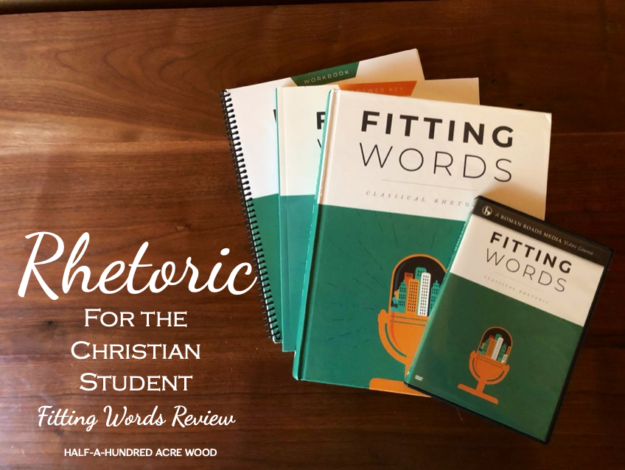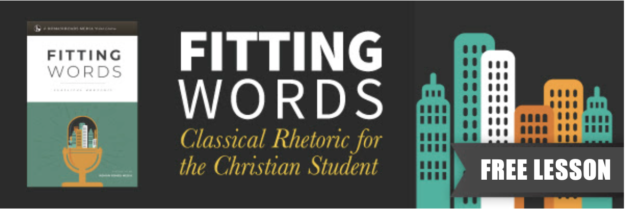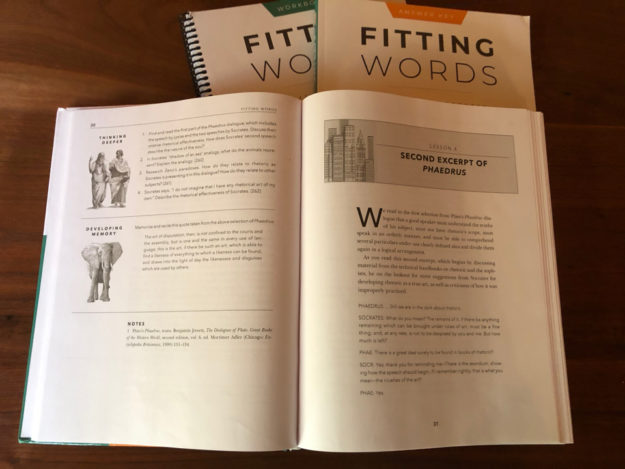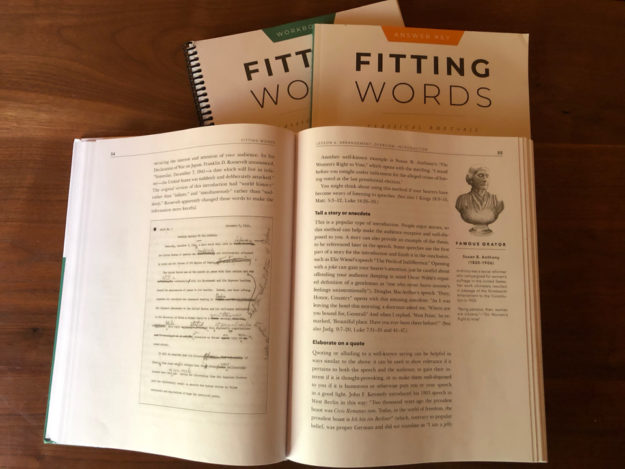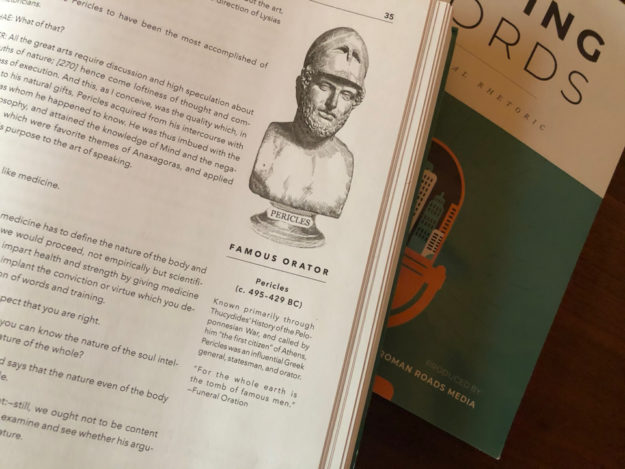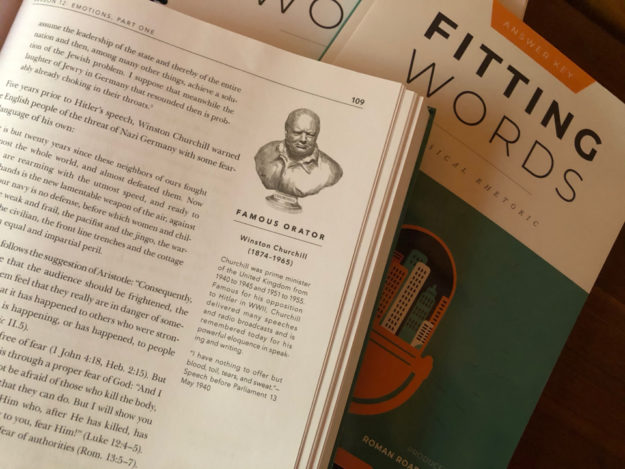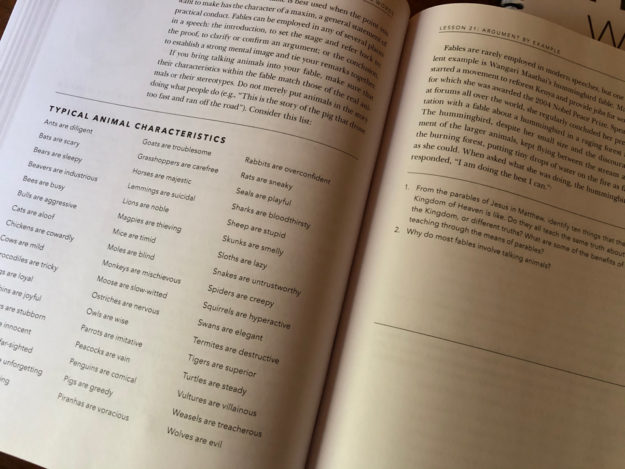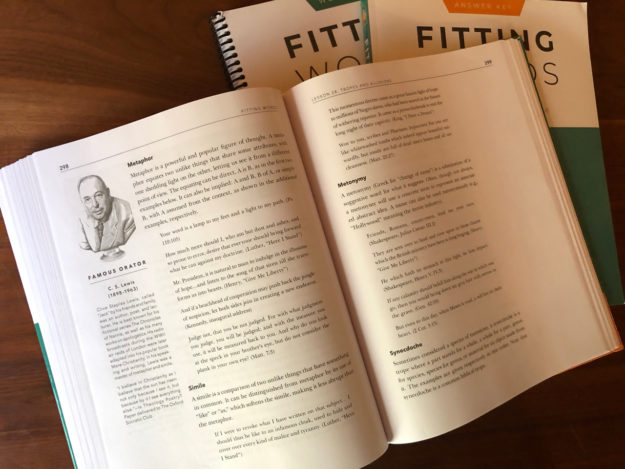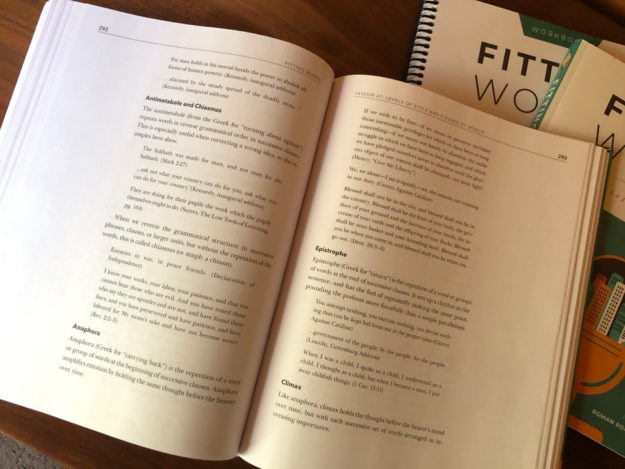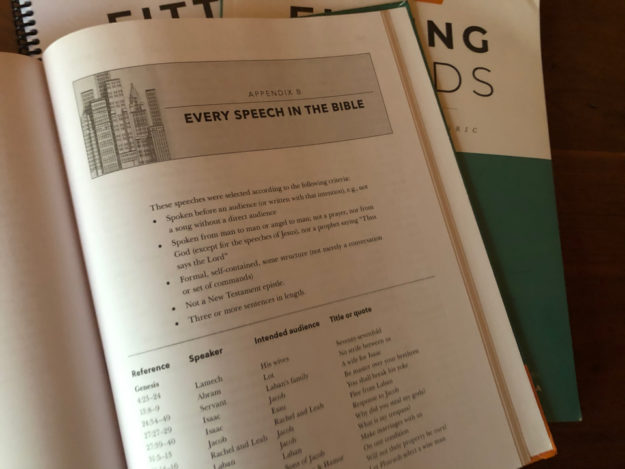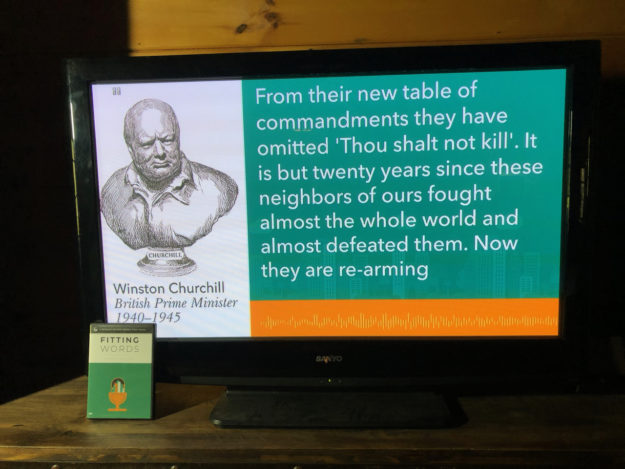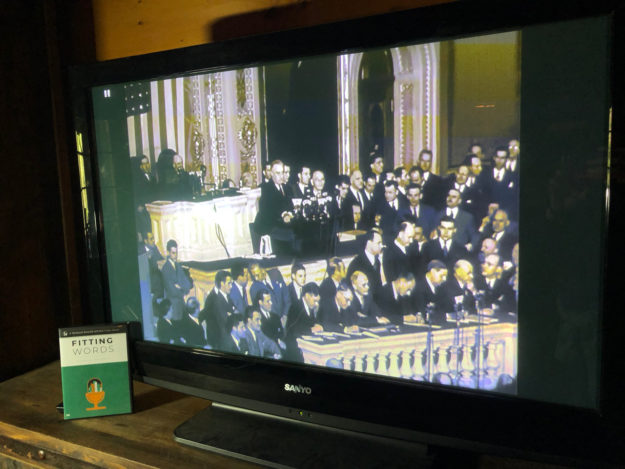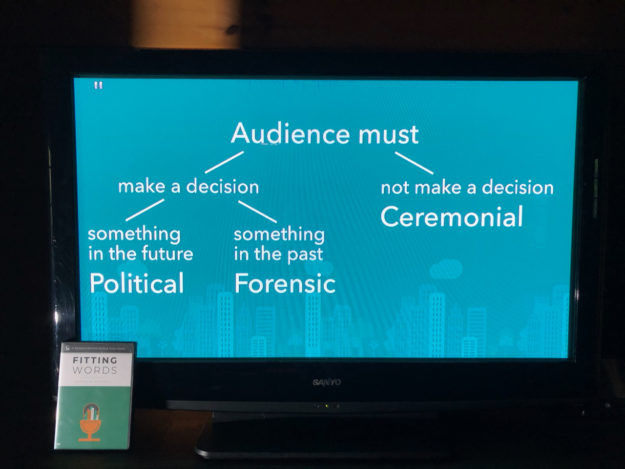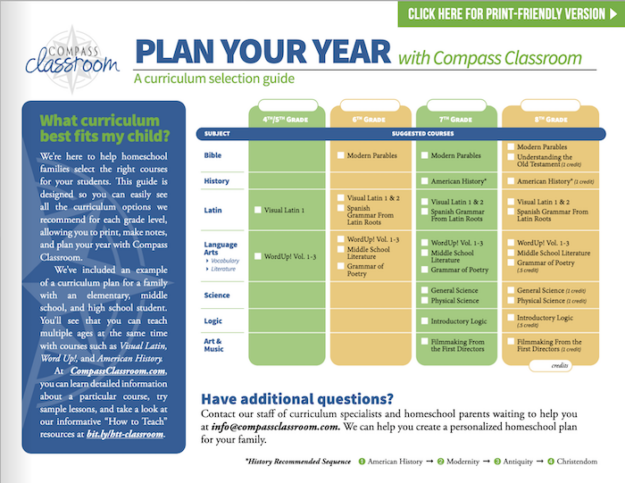“A word fitly spoken is like apples of gold in settings of silver.” Proverbs 25:11, NKJV
Scripture has much to say about what we say. As Christians, we’re challenged to speak righteously, graciously, and appealingly. We are to encourage and edify one another (1 Thessalonians 5:11), to share the Good News with the world (Mark 16:15), to speak truth (Ephesians 4:15, 25) and move others to goodness (Hebrews 10:24), and to become a voice for the voiceless (Proverbs 31:8-9). Every time we speak or write, we’re choosing the words we say. But how do we decide which words to use? The two greatest commandments, to love the Lord your God and to love your neighbor as yourself, should compel us to speak with clarity and sincerity, engaging others with speech that considers others before ourselves. And thus, rhetoric becomes a subject of great importance in a Christian education.
But what is rhetoric? It is the art of using words well. It’s the art of effectively and/or persuasively communicating (through speech or writing), using figures of speech, figures of thought, and other compositional techniques.
Years ago, I shared some thoughts on rhetoric. At that time, my husband and I didn’t know much about how we would actually teach rhetoric. We didn’t even know what resources existed to help us with so great a task. In fact, it was just by chance that I stumbled upon one of my greatest discoveries for teaching effective communication to ourselves and our children. That resource is Fitting Words.
We received this product in exchange for an honest review. After searching through several rhetoric options, Fitting Words has become our rhetoric curriculum of choice. Affiliate links are used in this post. If you purchase from Compass Classroom through our affiliate links, we receive a percentage of the sale at no additional cost to you. Please read our full disclosure policy for more details. Thank you!
The complete Fitting Words program consists of five key components:
- The Fitting Words Textbook
- The Consumable Student Workbook, including exercises and activities for every lesson along with six Speech Judging Sheets.
- An Answer Key and Teacher Guide with answers to every exercise and exam.
- The Fitting Words Exam Packet with nine exam reviews and nine exams.
- And a Fitting Words DVD video course in which students receive in-depth teaching with numerous examples, illustrations, and video & audio clips demonstrating excellent oratory from history.
The program begins with an overview of the foundations of rhetoric, including a Christian view of rhetoric, the birth of rhetoric, and excerpts from Plato’s dialogue Phaedrus.
The course then launches into an in-depth study of the Five Canons of Rhetoric (also known as the Five Faculties of Oratory), including invention, arrangement, style, memory, and delivery, incorporating real-world examples such as a rough draft of FDR’s “Day of Infamy” Speech with handwritten revisions.
The textbook regularly references the classical authors (e.g., Plato, Aristotle, Cicero, Quintilian, the Ad Herennium) and includes quotes from famous orators throughout history as it pertains to the skills taught in each lesson…
Because logos is a mode of persuasive, the course includes a review of logic, fallacies, and arguments, and even includes references to fables and parables.
Each lesson includes a “Thinking Deeper” section (with potential for diving into Socratic Dialogue), a “Developing Memory” section in which students are challenged to memorize quotes, scriptures, or literature, and a “Reading Further” section for further research. In the lesson pictured above, students are encouraged to study the parables of Jesus to examine the truths about the Kingdom of Heaven. They are also challenged to memorize and recite one of Aesop’s fables. Every lesson includes such questions and memory work.
Towards the end of the book, students study how to better understand their audience before proceeding into lessons on style which provide a detailed description of various figures of speech (schemes) and figures of thought (tropes) along with many examples from speeches, literature, and scripture.
Scripture is integrated throughout the teaching (both on DVD and within the textbook and student workbook), and the appendix includes both an assortment of speeches from antiquity to modern times and a valuable reference of every speech in the Bible.
As the textbook walks students through all of these key concepts to effective communication, the DVD course provides lessons, application, and practice in learning figures of speech, figures of thought, and modes of persuasion. It pulls in examples of powerful speeches through history, from ancient to modern times.
Some examples (as the one shown above) are audios, but video clips are also provided when available.
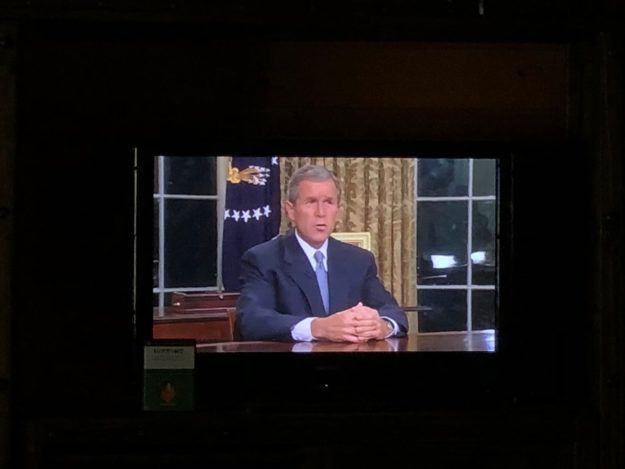
Some of the more amusing examples of rhetoric come from ads and movies.
In fact, Lesson 12 on understanding emotions includes a clip from Star Wars to illustrate the importance of music on emotion. Each lesson of Fitting Words has two videos: Lesson and Application. There are also exam prep videos for each of the nine exams throughout the course.
Over the course of this study, students prepare five oratories: an emotions speech, a forensic speech, a political speech, a ceremonial speech, and a persuasive speech.
While in the process of learning how to write and deliver these oratories, students are taught techniques for memorization and delivery, including such practical aspects as proper use of voice, countenance, and gesture.
Our family very highly recommends this course in rhetoric! From a practical standpoint, Fitting Words has helped our oldest son to greatly improve not only his overall writing but also his delivery of platform events (e.g., speeches and dramatic dialogues). He has grown in his ability to better esteem others as he learns to invent and arrange to honor and challenge his audience. Most importantly, this course has thoroughly integrated the beauty and goodness and truth of the scriptures.
We have enjoyed this course so much that next year, our second son (a 10th grader) will be embarking on using this program over a 2-year period. (Fortunately, the answer key comes with both a 1-year schedule and a 2-year schedule to make it simple to implement either plan!)
Try a free lesson!
You can check out an entire lesson by clicking on the “Sample Lessons” tab over at Compass Classroom or by clicking on the image below.
If you have questions about this program, please let us know by dropping down to the comments and leaving us a message! You can also visit this helpful website which lays out how to plan your year using Compass Classroom.

